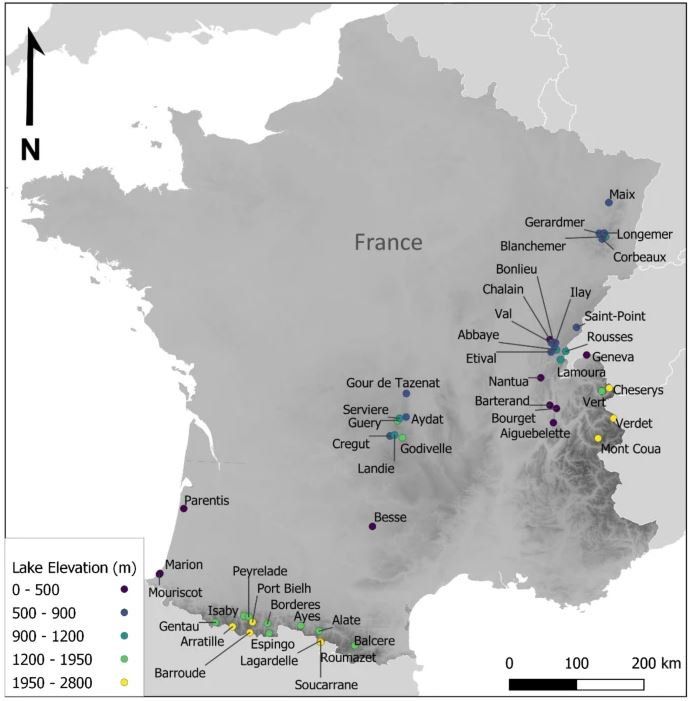-
Partager cette page
Paleoreconstructions of ciliate communities reveal long-term ecological changes in temperate lakes
Publié le 20 mai 2022 – Mis à jour le 23 mai 2022
Publication de Didier Galop dans Scientific reports

Ciliates are unicellular heterotrophic organisms that play a key role in aquatic planktonic and benthic food webs. Advances in sedimentary DNA (sed-DNA) analysis offer the possibility to integrate these bioindicators in paleoenvironmental reconstructions. In this study, we used the top–bottom paleolimnological approach and metabarcoding techniques applied to sed-DNA to compare the recent and past (i.e. prior to major anthropogenic impacts) ciliate communities of 48 lakes located along an elevation gradient.
Our results show an overall decline in the β-diversity in recent time, especially in lowland lakes, which are more strongly exposed to local human pressures. Analyses of the functional groups indicate important restructuration of the food web, including the recent increase in mixotrophs.
Moreover, changes in the benthic ciliates were consistent with the widespread increase in deep water anoxia. Our results provided evidence that sed-DNA can uncover information about past ciliate communities on a wide variety of lakes.
Overall, our study demonstrates the potential of using ciliates as new paleoindicators, integrating information from the pelagic to the benthic zones, and providing valuable insights into ecosystem functioning through a trait-based functional community approach. As paleoindicator, they thus offer a more holistic view on the long-term changes of aquatic ecosystems.
La suite de l'article sur Scientific reports
Our results show an overall decline in the β-diversity in recent time, especially in lowland lakes, which are more strongly exposed to local human pressures. Analyses of the functional groups indicate important restructuration of the food web, including the recent increase in mixotrophs.
Moreover, changes in the benthic ciliates were consistent with the widespread increase in deep water anoxia. Our results provided evidence that sed-DNA can uncover information about past ciliate communities on a wide variety of lakes.
Overall, our study demonstrates the potential of using ciliates as new paleoindicators, integrating information from the pelagic to the benthic zones, and providing valuable insights into ecosystem functioning through a trait-based functional community approach. As paleoindicator, they thus offer a more holistic view on the long-term changes of aquatic ecosystems.
La suite de l'article sur Scientific reports




